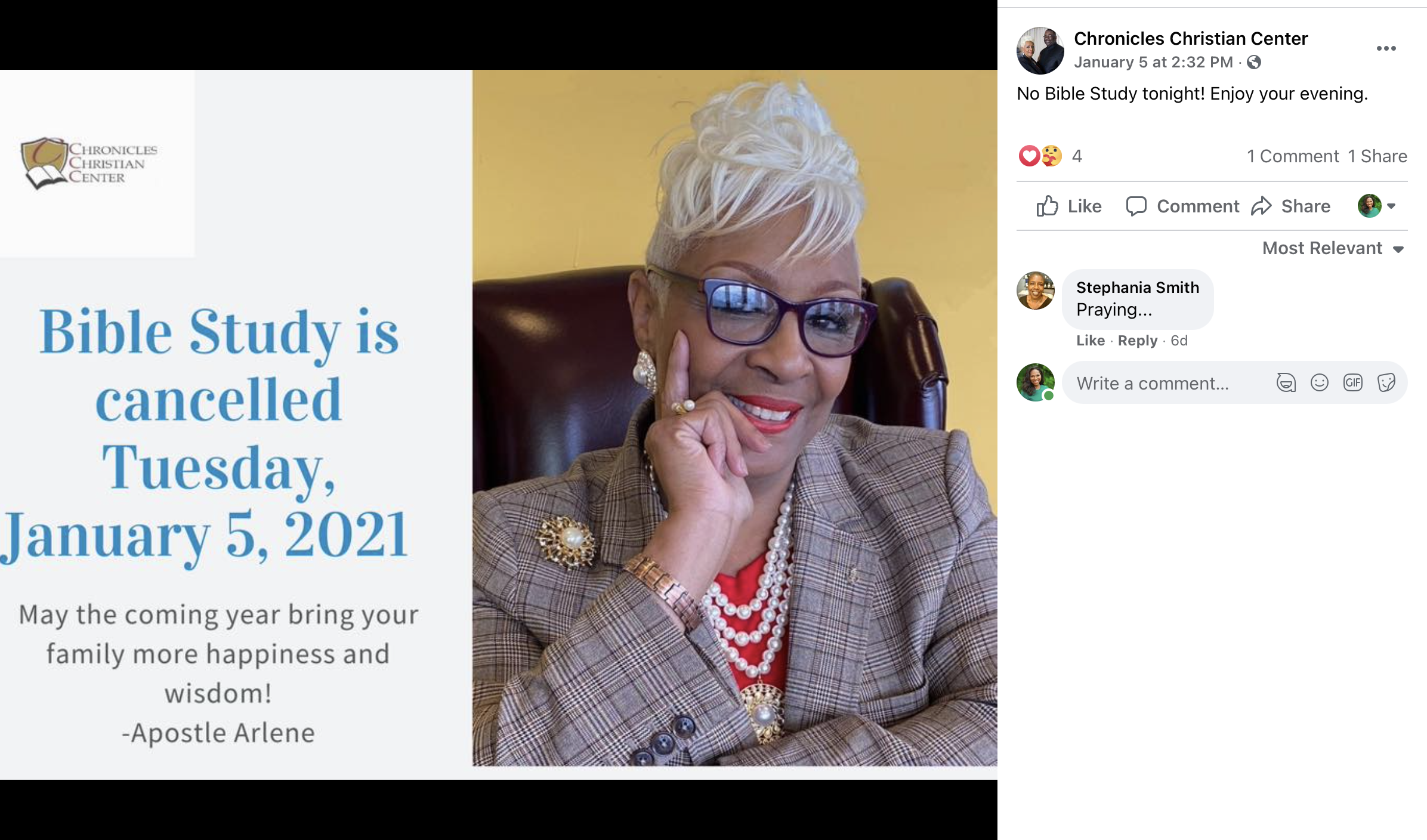Building a Stronger Online Church Presence in 2021
At Givelify, we believe every local church is uniquely gifted in its ability to share the gospel and build disciples. You are also uniquely poised to connect with those in your community. Yet, how do you do that well in the age of technology — or in the age of a global pandemic, for that matter?
Connecting with people starts with meeting them where they are. Since we can’t connect with them in person, having a digital presence is now more important than ever.
Last year forced many churches to embrace and build their online digital presence. So, how can churches build a stronger digital presence in 2021? In this blog, we will provide you with best practices for building a stronger website, creating community over social media, offering an online giving option, and more.
Why Does Having an Online Presence for your Church Matter?
As all age groups continue to embrace the power of digital media, more and more are looking for ways to find meaning and purpose in their lives through digital spirituality. How do we know?
The stats speak loud and clear: In our 2020 Giving in Faith Report, digitally savvy organizations with websites, Twitter, Instagram, YouTube, and live streaming saw 533% more donations than slow to adopt digital organizations.
This statistic underlines how important it was in 2020 for churches to stay connected to their members and serve their members’ spiritual needs through digital activity. Furthermore, more than 9 out of 10 donors (92%) say they will continue to donate primarily online when the pandemic is over.
5 Best Practices to Build a Strong Online Church Presence
1. Launch a Church Website
If this sounds daunting or expensive, it’s not! There are many free tools out there that help you through all phases of building your church website. Our number one suggestion for launching a church website is asking your church community for tech support.
Someone among your congregation has more skills and time than you may think. Call upon your faithful servants and volunteers to rise up to the task.
Whether you use a church member or you take on the task, there are several free options for building a DIY version of your site.
The two online website builders and CMS apps we list below will help different churches with different levels of skill. They each offer free basic options. If you want all the bells and whistles, you may have to pay, but most likely less than you expect!
Church websites don’t have to be complicated. One of our churches that uses our mobile giving platform is River City Community Church in Chicago. Their website is simple and beautiful.

2. Offer a Livestream of Your Service
Due to the spread of COVID-19, churches everywhere have rethought their Sunday services, moving them from physical to online gatherings.
But live streaming a sermon or Sunday service can be a real challenge, especially for small-to-medium-sized churches that lack the budget and team to execute a production.
So how do you live stream your service? There are again several options that are available for free. Facebook, YouTube, Zoom, and other alternative platforms offer a “live” feature. Believe it or not, all you need is a phone with a camera. You may find this article helpful for walking you through the process.
How to Livestream Your Church Service: A Practical Guide
Once you are up and running, there are many things you can offer to enhance your church’s online worship.
- First, enabling the chat feature while you are live gives your members an opportunity to connect and interact with the sermon in real time (without having to be hushed.)
- Next, use on-screen text and visuals to help your congregation stay engaged and to support comprehension.
- Finally, offer a giving link to your members during the live cast. Givelify provides each organization on our platform with a unique giving link that can be used for this purpose. You can even update your audience immediately on how much is raised if transparency is one of your core values. You can read more about upping your live stream game in our blog post: Church Live Stream: How to Take Yours to the Next Level.
Relevant Life Church Atlanta offers multiple ways to watch its services live:
3. Build a Social Media Presence
Remember how I said earlier that it’s important to connect with people where they are? Jesus spoke to the people at the temple steps or the well because that’s where they went daily. In 2021, people are daily (even hourly) checking their social media accounts. Here are some stats that may not surprise you:
Every second, 11 new people join a social media network. About 60 percent of Instagram users access their accounts every day. The amount of Facebook users over age 65 has increased 20 percent since last year. No matter what generation they’re a part of, almost every member of your congregation probably has an account on at least one social network.
We’ve already published a series on how to use social media as part of your ministry toolbox, so you can read more about How Can Social Media and Online Giving Support Your Church?
Facebook is the Athens of social networks. In Christianity, the Apostle Paul went to Athens where the Greeks, Epicurean and Stoic philosophers, and travelers would meet to discuss everything from philosophy and religion to politics and entertainment.
He chose the Parthenon as the backdrop to tell people that his God was the one true God and that his son Jesus had been resurrected from the dead because, one can assume, it was the world’s center for the exchange of ideas.
That center is now Facebook. With over 2.7 billion monthly active users as of the second quarter of 2020, it continues to surpass all the other platforms. If you’re going to speak good news to people in your neighborhood, you better believe that you may have an easier time connecting with your neighbor online than at the mailbox.
Chronicles Christian in St. Louis, Missouri uses their Facebook for many purposes, including communicating directly with their congregants.

Read more about launching a church Facebook account here: Social Media for Churches: Best Practices for Facebook.
If people use Facebook, why would you need Instagram?
The 18-29 age bracket uses this platform at an incredibly high rate (59%), and even the 30-49 cohort are on the platform (33%). That means a whole lot of people in your congregation may be using Instagram.
Instagram is a highly visual and image-dominated platform. That means it’s full of lots of pretty pictures! If you have pictures of your members or community, Instagram is the perfect place to highlight what your church values.
Rev. Charles Spencer Hamilton has his own personal account and uses it to respond to current events and encourage people with the message of the gospel.

We’ve come up with 6 best practices for Churches on Instagram that should guide your attempts at becoming more present and mission-driven online: Social Media for Churches: Best Practices for Instagram.
One of the top four apps for online connection is Twitter. If you haven’t been using Twitter, now is the time to consider creating a profile for yourself or for your church.
With 1.6 billion users and 550 million people having sent at least one tweet, you can easily see how great of a tool Twitter is to reach the masses with your message. Twitter used to have a limit of 140 characters but has since been increased to double that at 280.
Your church can tweet inspirational quotes or Bible verses, a great way to encourage your social media audience and spread the message of the Gospel.
These shareable pieces of content also tend to get more engagement and retweets than other posts. By tagging members or citing the speaker of the quotes, you can expand your reach and let others know who you are as a church and what you are about.

Another church that incorporates Givelify into their online worship practice, St. James AME of Denton, Texas, held a joint service with Trinity Presbyterian (pre-covid, mind you!). Through this collaboration, the two churches were able to connect both audiences on Twitter, celebrating their unity in a public forum.
Read more about launching a church Twitter account here: Social Media for Churches: Best Practices for Twitter.
Once your social media is up and running, it’s always a good idea to strategize about what kind of content you could share that will support your mission. We give you lots of great inspiration in our post titled Your Complete Guide to Church Social Media Content Ideas.
4. Send an E-Bulletin or Church Newsletter by Email
Save money on printing expenses by sending an electronic version of your bulletin or church newsletter. Or offer both! Building a strong online presence for your church doesn’t have to mean abandoning the old way of doing things. In fact, offering both is a helpful way to introduce digital worship and online community building to your members.
Using the same format for your church bulletin or an email platform like Mailchimp or Constant Contact, you can easily connect with members in the safety of their own homes and in their own time. They can add events to their calendars, read the passage before the service, or even forward your church’s contact information to friends and family.
Read more about what it takes to create a must-read church e-newsletter:
5. Offer a Way to Give Online
This new year has brought with it many of the challenges from 2020. Meeting in person is not yet safe, making passing the plate a super-spreader practice. So how do you make giving more convenient for your members who are sheltering in place?
Consider joining an online giving platform. Givelify Offers Solutions to Churches for Online Charitable Giving making giving simple and free. One click from a custom giving link to your church’s bank account and your tithers can add to the donation plate without one germ being spread.
Of course, giving generously online is not only about safety, but also convenience and accountability. People don’t carry as much cash as they used to and remembering tithes when church is online is a challenge for the sharpest minds. If part of your service includes the offering, add your giving link to the comments and keep the tradition going, 2021 style.
Online Church Terms to Know
Overwhelmed with all the new technology lingo? Never fear! We have put together a collection of terms used in this post that could bear additional explanation.
Domain: a domain is what you type into your web browser’s address bar to get to a website’s homepage. It’s where your website lives online. Your website’s homestead, if you will.
URL: the address for your website. It begins with https:// and then the www. Example: https://www.givelify.com.
CMS (or content management system): not to be confused with ChMS, a CMS is a platform that keeps track of online content that your team has created. Blogs, images, pages, etc. can be saved on your CMS. Examples include monday.com, Contentful, Dropbox, and Hubspot.
Online Giving Platform: a digital offering plate and financial app with accountancy functions that allows multiple donors to give electronically in one place.
Livestream: a place on the world wide web where viewers can watch live events and productions.
Podcast: a digital audio file made available for download, available on podcast libraries like Apple iTunes, YouTube, Google podcast apps, and websites. Podcasts are like a radio series that you can listen to whenever you want.
Here are a few more terms that may help you in your journey to build a stronger online church: Social Media for Churches: Jargon You Need to Know.
How to Help Your Members to Embrace Online Church
Pastors have now become digital pied pipers, and your job description just got bigger. But let’s not fool ourselves, faith leaders are typically not short on things to say and never shy away from a platform to share their message. It can be, however, a challenge to get all of your congregation to embrace online church.
So how do you get folks onboard? You give them valuable opportunities to connect daily with your church. You give them inspiration, guidance, teaching, encouragement, and offer a place to connect with other members. Most people are longing for connection, now more than ever.
Publish articles, podcasts, book recommendations, photos of events, a community directory, bible reading plans, inspirational verses, and quotes, or anything your congregation will find helpful. Here are some ideas to get you started: Church Apps that Help Members Embrace Technology
Also consider this, according to our Giving in Faith report, nearly 54 percent of faith leaders said an older, non-tech savvy congregation was the main reason they did not adopt online giving sooner.
However, faith leaders of these organizations found that not only do older members enjoy using online giving, but they also say it is much easier to use and often give more than in person. A critical takeaway is for faith leaders to try online options, including giving, and see how their congregation responds.
Build with the End in Mind
As you start or strengthen your online presence, keep your mission, vision, and values central to your game plan. Let those guide your digital growth. Remember, computers and the internet are powerful tools that can be harnessed and used to spread the message of Christ.
Where to Start?
You can dip your toe into the online church world by signing your church up now for Givelify, one of the few FREE platforms. Most have a monthly fee. Givelify is a low-risk, high-reward way to move toward building your online presence.





